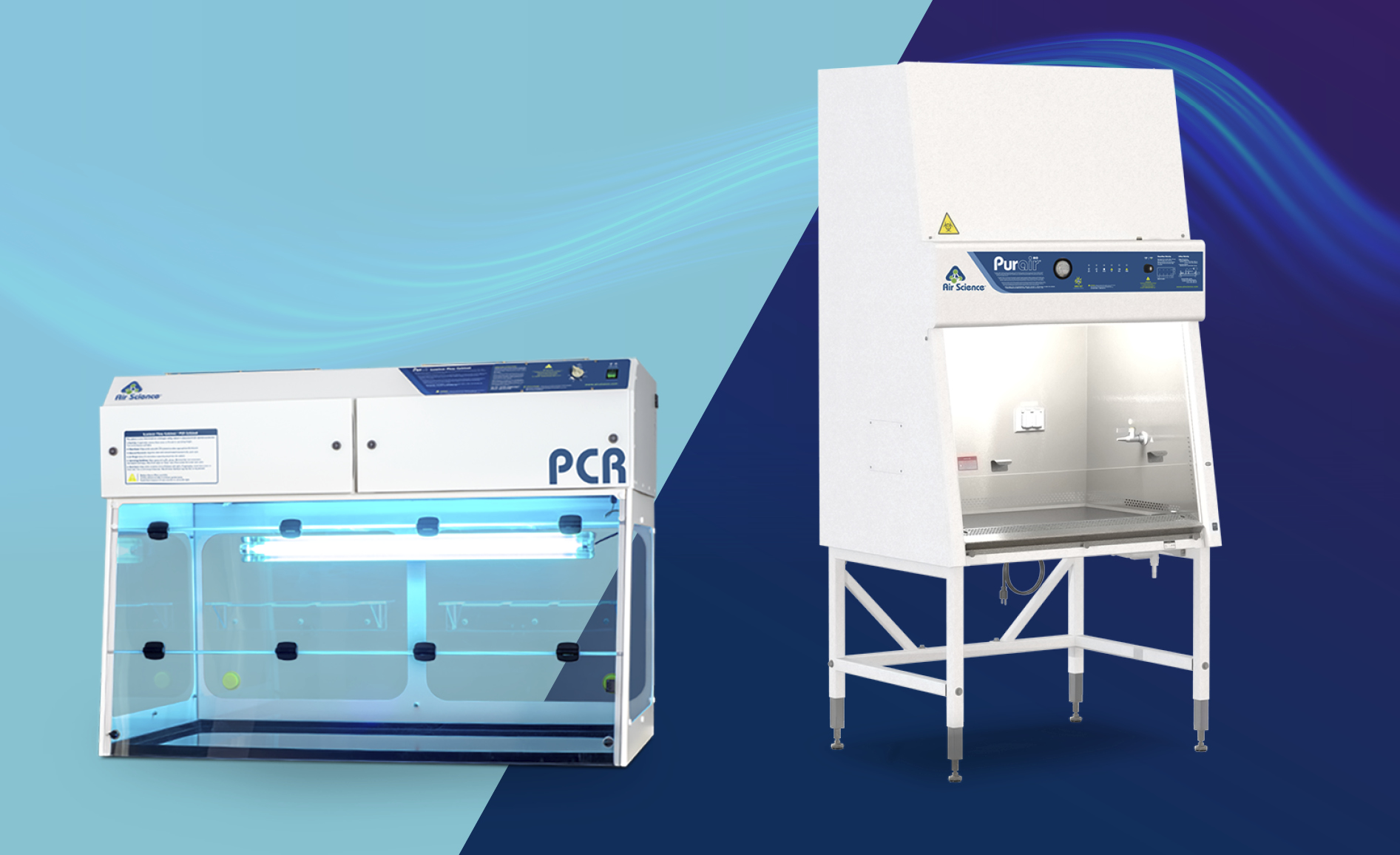
Selecting the appropriate equipment is crucial in laboratory environments where contamination control is paramount. When determining the most appropriate equipment for your contamination-sensitive application, it’s important to consider the purpose as well as the protection level. When it comes to PCR Workstations and Class II, Type A2 biosafety cabinets, or biological safety cabinets (BSCs), understanding the differences is key.
|
Purpose and Applications
|
|
|
PCR Workstations:
|
Biosafety Cabinets:
|
|
Protection Levels
|
|
|
PCR Workstations:
|
Biosafety Cabinets:
|
|
Airflow and Filtration
|
|
|
PCR Workstations:
|
Biosafety Cabinets:
|
Air Science's Solutions
Selecting between a PCR workstation and a biosafety cabinet depends on your laboratory’s specific needs. For tasks focused on preventing sample contamination without exposure to hazardous materials, a PCR workstation like the Air Science Purair® PCR Workstation is more appropriate.
Purair PCR Workstations offer protection by laminar flow for PCR amplification handling that is extremely sensitive to contamination. Decontamination between applications is simplified via a germicidal UV lamp, which creates light emission conditions known to provide safe decontamination.
However, if your work involves biohazardous agents, a biosafety cabinet such as the Purair® BIO is essential for comprehensive protection. The Class II, Type A2 Purair BIO provides a primary containment work area for life science research, cell culture processing, and other applications where protection of the user, the work product, and the environment, and mitigation of cross-contamination on the work surface are needed.
Ready to Enhance Your Laboratory's Safety and Efficiency?
Explore Air Science’s range of PCR workstations and biosafety cabinets to find the perfect fit for your laboratory needs. Visit ductless.com to browse and purchase products online.